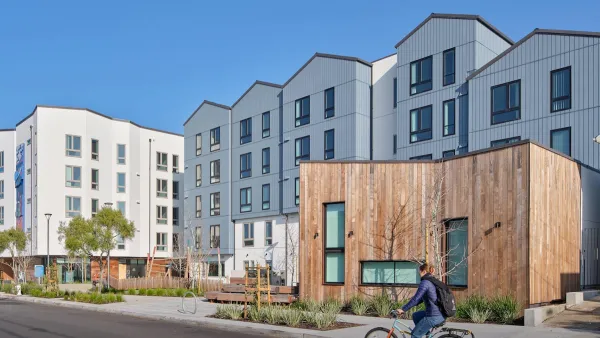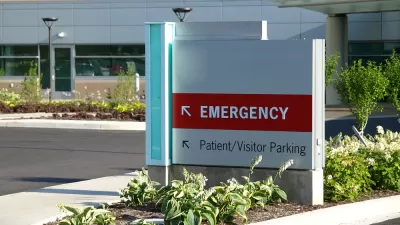As COVID infections and hospitalizations mount in California, ICU availability dropped to zero in Southern and Central California. Demand for hospital care is also outstripping supply in New Mexico.

Algernon D'Ammassa of the Las Cruces Sun-News also reported on the activation of the crisis standards.
Hospital leaders in the Albuquerque area have been warning for several weeks that the state's hospital system, which ranks among the bottom six in the United States for hospital bed capacity, has been exhausted by a surge in hospitalizations for COVID-19 disease.
New Mexico's "decision to activate crisis standards was welcomed by hospital leaders Thursday," adds Witte on December 10. "But it remained unclear how far they would go in using the more flexible rules to meet surging demand."
Tia Powell and Elizabeth Chuang of the Albert Einstein College of Medicine in the Bronx in the abstract of the report.
These were not available to NY clinicians because of the state’s failure to implement, with or without revision, long-standing guidance documents intended for just such a pandemic...
" published November 24.
California hospital crisis
What's unfolding now in Southern California is becoming eerily reminiscent of the spring in New York City. "[T]he state has distributed 5,000 newly purchased body bags to San Diego, Los Angeles and Inyo counties, and has 60 53-foot refrigerated storage units on standby in counties and at hospitals," reported ABC News on December 15.
According to data last updated on December 19 on the California Department of Health's Regional Stay Home Order webpage, intensive care unit (ICU) availability is 2.0% statewide. Two of the five regions, San Joaquin Valley (roughly Central California) and Southern California), are at 0.0%.
"With ICUs filled, hospitals will step up measures to ensure the sickest patients still get the highest levels of care possible," report Soumya Karlamangla, Rong-Gong Lin II, and Luke Money.
That often means moving some patients who would typically be in the intensive care unit to other areas of the hospital, such as a recovery area, or keeping them in the emergency room for longer than normal.
Once ICU beds are full, hospitals go into surge mode, which can accommodate 20% over usual capacity. Officials have also been training medical personnel who work elsewhere in hospitals to allow them to work in ICUs, and seeking nurses from outside the United States.
However, projections indicate that capacity in Los Angeles County could be exhausted in less than a month.
There are now more than 1,000 people with COVID-19 in L.A. County’s intensive care units, quadruple the number from Nov. 1. Forecasts say that by early January, there could be 1,600 to 3,600 COVID-19 patients in need of ICU beds if virus transmission trends remain the same.
There are only 2,500 licensed ICU beds in L.A. County.
“Our hospitals are under siege, and our model shows no end in sight," said Dr. Christina Ghaly, the county’s director of health services.
Regardless of whether crisis care standards are enacted, the level of care will degrade, according to Dr. Denise Whitfield, associate medical director with the L.A. County emergency medical services agency and an emergency room physician at Harbor-UCLA Medical Center.
“If the numbers continue to increase the way they have, I am afraid that we may run out of capacity within our hospitals,” said Whitfield. “And the level of care that every resident in Los Angeles County deserves may be threatened just by the fact that we are overwhelmed.”
California is opening field hospitals in the San Joaquin Valley as well as Sacramento, Imperial, and Orange counties.
New Mexico and California COVID trajectories
"New Mexico Health and Human Services Secretary David Scrase suggested the COVID-19 death rate could decline in coming days, since New Mexico’s virus spread rate has recently dropped," reported the Albuquerque Journal on December 10.
Specifically, the spread rate – it measures how many other people will be infected by each infected resident – had declined from 1.3 about a month ago to 0.77, the lowest rate of transmission of the pandemic so far.
When the infection growth rate is below 1, daily new cases should decrease, depending on the level of diagnostic testing. Both metrics are used by Covid Act Now to determine risk levels, along with "ICU headroom used." While New Mexico has the nation's highest ICU metric, 90%, on Dec. 20, its daily new cases rate has dropped to 74.5 per 100,000 people, #14 in the nation.
California is #2 in the nation in daily new cases, 102 per 100k, after Tennessee, 135 per 100k, while Rhode Island is third (94 per 100k) on December 20. While California is #5 in ICU headroom used at 77%, expect that percentage to increase. Most disturbing is the infection (growth) rate: 1.26, the nation's highest.
The 14-day rolling average of new daily cases was 35,454 on December 18, according to the California Department of Public Health. As for the relationship between new cases and hospitalizations, Karlamangla, Lin II, and Money of the Times explain:
Because of the lagging nature of the novel coronavirus, it can take two to three weeks for spikes in cases to trigger a corresponding increase in hospitalizations. When that happens, though, the consequences can be sudden and severe. State officials have previously estimated that 12% of newly diagnosed coronavirus cases are likely to require hospitalization, with 12% of those eventually ending up in the ICU.
California Crisis Care Guidelines
In June, then-California Public Health Director Sonia Y. Angell released the guidelines [pdf]. "Anchored in best practices from across the country, and guided by ethical principles and a commitment to equity, it provides a framework to help health care facilities and county health departments plan for the potential of a COVID-19 surge that is overwhelming." While the summer surge was far greater than the spring outbreak, the guidelines were not implemented.
According to a December 19 report by Karlamangla, Lin II, and Adam Elmahrek of the Times, "[m]any hospitals are preparing for the possibility of rationing care in the coming weeks as the number of patients exceeds their staffs’ abilities to care for them."
A document obtained by The Times outlining how to allocate resources in a crisis situation was recently circulated among doctors at the four hospitals run by Los Angeles County.
L.A. County Health Services Director Dr. Christina Ghaly said in an email that the guidelines were not in place as of Friday night but that they were essential to develop given the surge has arrived and “the worst is yet to come.”
The next three weeks will be critical, states Dr. George Rutherford, an epidemiologist and infectious-diseases expert at U.C. San Francisco. If Californians abide by the restrictions in the regional stay home order, he said "the earliest signs of a leveling off in new daily cases" could be seen as early as Dec. 21, but the pressure on the hospitals wouldn't lessen due to the lagging nature of the onset of symptoms after infection.
Related in Planetizen:
-
Another Grim Coronavirus Milestone: This Time in Southern California, August 19, 2020
FULL STORY: New Mexico activates ‘crisis care’ standards for hospitals overwhelmed by covid

Planetizen Federal Action Tracker
A weekly monitor of how Trump’s orders and actions are impacting planners and planning in America.

San Francisco's School District Spent $105M To Build Affordable Housing for Teachers — And That's Just the Beginning
SFUSD joins a growing list of school districts using their land holdings to address housing affordability challenges faced by their own employees.

The Tiny, Adorable $7,000 Car Turning Japan Onto EVs
The single seat Mibot charges from a regular plug as quickly as an iPad, and is about half the price of an average EV.

With Protected Lanes, 460% More People Commute by Bike
For those needing more ammo, more data proving what we already knew is here.

In More Metros Than You’d Think, Suburbs are Now More Expensive Than the City
If you're moving to the burbs to save on square footage, data shows you should think again.

The States Losing Rural Delivery Rooms at an Alarming Pace
In some states, as few as 9% of rural hospitals still deliver babies. As a result, rising pre-term births, no adequate pre-term care and "harrowing" close calls are a growing reality.
Urban Design for Planners 1: Software Tools
This six-course series explores essential urban design concepts using open source software and equips planners with the tools they need to participate fully in the urban design process.
Planning for Universal Design
Learn the tools for implementing Universal Design in planning regulations.
Smith Gee Studio
City of Charlotte
City of Camden Redevelopment Agency
City of Astoria
Transportation Research & Education Center (TREC) at Portland State University
US High Speed Rail Association
City of Camden Redevelopment Agency
Municipality of Princeton (NJ)





























